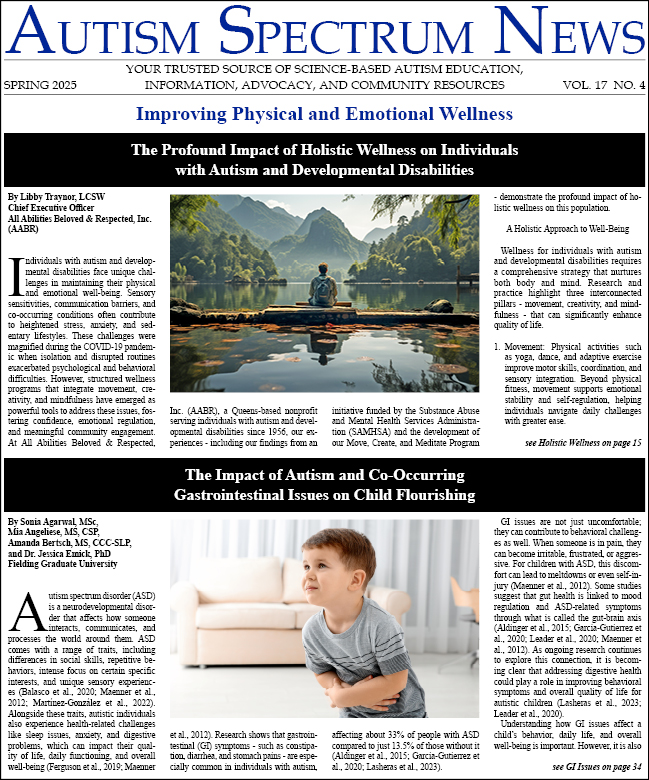-
Autism Plus Wandering
When Liane Kupferberg Carter’s son Mickey began “escaping,” as she calls it, around age 2, “he was greased lightning,” she says. “I couldn’t take my eyes off him for an instant or he’d disappear — in malls, supermarkets, or in any public space.” As her son got older, things...
-
Two Sides to the Safety Equation: Bridging the Gap Between Police and Individuals with ASD
Given the heightened risk that individuals with autism face when they have contact with the police, this article highlights two valuable safety programs that bridge the gap between police and those with ASD to build mutual understanding and improve outcomes in a police encounter. Media outlets...
-
Bullying and Youth with Disabilities and Special Health Needs
Children with disabilities—such as physical, developmental, intellectual, emotional, and sensory disabilities—are at an increased risk of being bullied. Any number of factors— physical vulnerability, social skill challenges, or intolerant environments—may increase the risk. Research...
-
A Responsive, New Wave of Real Estate Options for Adults with Autism and for Special Populations
Exciting new models for supportive housing are emerging, changing the landscape and raising the bar on dreams and expectations for the neurodiverse population. Far too many young adults are graduating from high school to the couch. They are socially isolated, unemployed or underemployed, and...
-
The Link Between Autism and Suicide Risk
Mr. A, a middle-aged chemist, came to a Baltimore emergency room after a suicide attempt. He said he was “thoroughly depressed.” He had been fired after throwing a chair at his boss, not his first outburst at work. Doctors admitted him to the hospital, where they became suspicious of his...
-
Reducing Disparities in Early Identification of ASD
Early identification of autism spectrum disorder (ASD) expedites access to appropriate intervention and leads to improved functional outcomes (Dawson et al., 2010). Yet, despite concerns of possible ASD often noted by 18 months, the median age of diagnosis in the United States continues to hover...
-
Adults with Autism Face a Unique Set of Dangers and Hazards
The dangers and hazards of the world that are faced by autistic children and adolescents are very well known, and much has been said and written about them. Adults with autism, however, all too often face a variety of threats not frequently encountered by neurotypicals. I will be discussing these...
-
Online Dating and Neurodiversity
Much has been written about the basic safety considerations of online dating, yet little research has been conducted to understand the nuanced difficulties that may be present for individuals on the autism spectrum who date online. A survey by Roth and Gillis (2015) found the most commonly reported...
-
Literacy Supports for Learners with Autism
In her article How People with Autism Think, Temple Grandin (1995), a high-functioning person with autism, describes her visual method of thinking. Grandin retrieves words through visualizations and movies within her mind. This type of thinking takes time to process, often making abstract thoughts...
-
Analyzing Health Informatics to Ensure Safety and Wellness
As the amount of data recorded in classrooms continues to expand, so, too, does the opportunity for individual, organizational, and systemic improvements informed by that data. One area of increasing focus is the collection and analysis of health and wellness data, collectively known as health...




